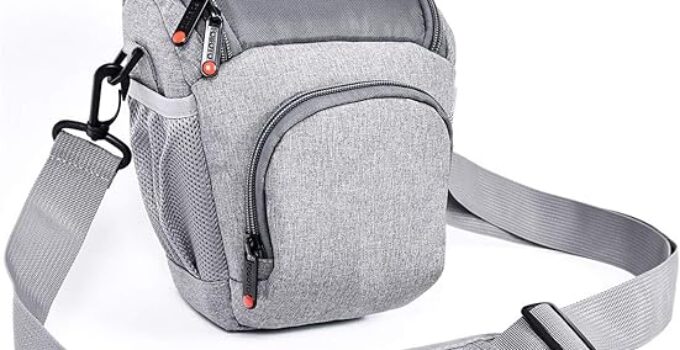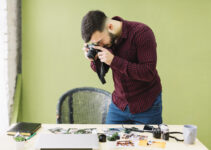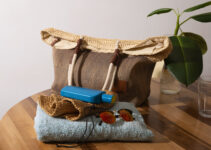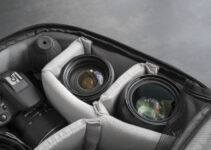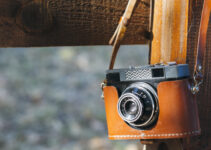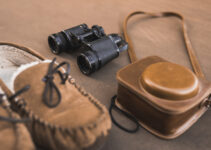Are you tired of lugging around your camera without proper protection?
How to buy a camera bag that fits your needs perfectly? In a sea of options, finding the ideal camera bag can be daunting, but fear not! We’ve got you covered with expert tips and insights.
In short, a camera bag should not only safeguard your gear but also offer convenience and style.
From backpacks to sling bags, there’s a plethora of designs catering to various preferences and equipment sizes.
Dive into our comprehensive guide to discover the best options for your photography adventures.
Curious to explore the top-rated camera bags recommended by renowned photographers? Join us as we unveil the secrets to choosing the perfect camera bag that complements your photography style and protects your valuable gear.
Don’t miss out on our exclusive insights from industry experts, guiding you towards making an informed and satisfying purchase.
How to buy a camera bag- 15 Factors to consider
1. Size and Capacity
When purchasing a camera bag, the first factor to consider is its size and capacity.
You need a bag that can comfortably fit all of your camera gear, including your camera body, lenses, batteries, chargers, and any other accessories you may need.
Consider not just what you currently have but also any future additions to your gear collection.
2. Protection and Padding
A good camera bag should provide adequate protection for your equipment.
Here, 10 best canon camera bags.
Look for bags with thick padding or compartments specifically designed to cushion your camera and lenses from bumps and drops.
Some bags even come with waterproof or weather-resistant materials to protect your gear from rain or moisture.
3. Accessibility
Consider how easy it is to access your gear in the bag. Bags with quick-access compartments or side openings can be convenient for quickly grabbing your camera without having to fully open the bag.
Think about your shooting style and how often you need to access your equipment.
4. Comfort and Ergonomics
Since you may be carrying your camera bag for extended periods, comfort is crucial. Look for bags with padded straps and back panels that distribute weight evenly.
Adjustable straps can also help customize the fit for your body type, reducing strain on your shoulders and back.
Best small camera bags for DSLR for 1 lens.
5. Durability
A durable camera bag is essential for long-term use.
Consider the materials used in the bag’s construction, such as sturdy nylon or polyester fabrics. Reinforced stitching and quality zippers can also contribute to the bag’s overall durability.
6. Organization and Compartments
Organizational features can make a big difference in how efficiently you can access and manage your gear.
Here mini lou metaless camera bags.
Look for bags with dividers or customizable compartments that allow you to arrange your equipment neatly. External pockets or pouches can also be handy for storing small items like memory cards or filters.
7. Style and Design
While functionality is key, the style and design of the camera bag also matter.
Choose a bag that reflects your personal style and preferences, whether you prefer a sleek, minimalist look or a more rugged, outdoor-friendly design.
8. Weight
Consider the weight of the camera bag itself, especially if you’ll be carrying it for extended periods.
Lightweight materials can help reduce fatigue, especially when combined with ergonomic features like padded straps and back support.
9. Compatibility with Gear
Ensure that the camera bag is compatible with your specific camera gear.
Check the dimensions of the compartments to make sure they can accommodate your camera body, lenses, and accessories without being too tight or too loose.
10. Security Features
Security is important when carrying expensive camera equipment.
Look for bags with features like lockable zippers or even anti-theft devices for added peace of mind, especially when traveling or in crowded areas.
Here, Kourtney camera bags.
11. Ventilation
If you live or travel in hot climates, ventilation can be crucial to prevent your gear from overheating.
Some camera bags come with breathable mesh panels or airflow systems to keep your equipment cool and prevent moisture buildup.
12. Cost and Budget
Consider your budget when shopping for a camera bag. While quality bags can be an investment, there are options available at various price points.
Balance your needs with your budget to find the best value for your money.
13. Brand and Reputation
Research the brands and read reviews to gauge the reputation of the camera bag you’re considering.
Established brands with a history of producing quality camera bags may offer more reliability and customer support.
Here, have you ever found the perfect camera bag for you?
14. Portability and Travel-Friendly Features
If you travel frequently with your camera gear, look for bags that are designed for portability and convenience.
Features like luggage pass-through straps, carry-on compatibility, and collapsible designs can make traveling with your gear easier.
15. Warranty and Customer Support
Finally, consider the warranty and customer support offered by the manufacturer.
A good warranty can provide peace of mind in case of any defects or issues with the bag, while responsive customer support can assist you with any questions or concerns.
By considering these fifteen factors when buying a camera bag, you can make an informed decision that meets your needs and protects your valuable camera equipment.
How to measure a camera bag?
Measuring a camera bag involves determining its dimensions to ensure it can accommodate your camera gear.
To measure the width, measure the widest part of the bag from side to side. For height, measure from the bottom to the highest point, excluding any handles. Depth is measured from the front to the back of the bag.
If the bag has compartments or dividers, measure the interior dimensions of each compartment to ensure they fit your equipment.
Additionally, consider the overall shape of the bag, as some may be narrower at the top than at the base.
When measuring a camera bag, accuracy is crucial to ensure a proper fit for your gear and to avoid any surprises when you receive the bag.
Here, what is the favourite camera bag accessory?
How to decide on a camera bag?
Deciding on a camera bag involves considering several factors. First, assess your gear’s size and quantity to choose a bag with appropriate capacity.
Consider the level of protection needed, such as padding and weather resistance. Accessibility is crucial for quick gear retrieval during shoots.
Comfort matters for extended carrying, so look for padded straps and ergonomic designs. Durability ensures long-term use, while organizational features enhance convenience.
Style reflects personal preference but prioritize functionality. Weight should be manageable even with gear inside.
Ensure compatibility with your gear, and consider security features for peace of mind.
Ventilation may be important in hot climates. Factor in your budget and brand reputation, along with portability if you travel frequently.
Finally, check the warranty and customer support for added assurance. Balancing these considerations will help you make an informed decision when choosing a camera bag.
Can I use any bag as a camera bag?
While you can technically use any bag to carry your camera equipment, using a purpose-built camera bag offers several advantages.
Camera bags are specifically designed to provide optimal protection, organization, and accessibility for your gear.
They often feature padded compartments, adjustable dividers, and weather-resistant materials, which are crucial for safeguarding expensive camera equipment from damage due to bumps, drops, and environmental factors.
Moreover, camera bags typically offer specialized pockets and compartments for accessories like lenses, batteries, memory cards, and tripods, keeping everything neatly organized and easily accessible.
They also tend to have ergonomic designs with padded straps and back panels for comfortable carrying, especially during extended periods.
While you may use a regular bag in a pinch, investing in a dedicated camera bag ensures the safety and convenience of your valuable camera gear in the long run.
How many camera bags do you need?
The number of camera bags you need depends on your specific needs and preferences as a photographer. Generally, having at least one well-suited camera bag is essential.
This primary bag should meet your daily shooting requirements, providing adequate space, protection, and organization for your camera body, lenses, accessories, and personal items.
However, some photographers may find it beneficial to have multiple camera bags for different purposes.
For instance, a smaller and more compact bag may be ideal for quick outings or travel light, while a larger bag with more storage capacity may be necessary for extensive shoots or carrying additional equipment.
Furthermore, having a backup camera bag can be advantageous in case your primary bag needs repairs or if you require a different style for specific assignments.
Ultimately, the number of camera bags you need depends on the diversity of your photography needs and your comfort level in managing different bag styles.
Best camera bag for first-time photographers
| Image | Product | Details | Price |
|---|---|---|---|
 |
EVA Travel Storage Case For Canon EOS Rebel T7 DSLR | High Quality Material: The storage case is made of high quality EVA material | Check Price |
 |
CADeN Camera Bag Sling Backpack Camera Case Waterproof |
Both sides quick acess with protable drawstring, Only 2 seconds to get camera | Check Price |
 |
FOSOTO Compact DSLR Camera Bag Shoulder Crossbody Case | The camera bag will fit most DSLR camera with standard lens( | Check Price |
 |
FOSOTO Camera Bag Case with Waterproof Rain Cover Compatible | Insert Camera Bag: With removable shoulder strap and padded carry handle | Check Price |
 |
Nanuk 905 Waterproof Hard |
Waterproof (IP67 rated), dustproof, shockproof | Automatic purge | Check Price |
Conclusion:
When purchasing a camera bag, consider factors like size, durability, comfort, and functionality.
Research different brands and models, read reviews, and assess your specific needs.
Ultimately, choose a bag that protects your gear, suits your style, and enhances your photography experience.

